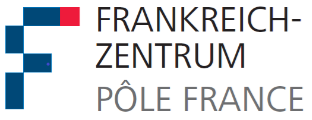The role of T lymphocytes in controlling HIV infection.
T lymphocytes play a crucial role in controlling the infection with human immunodeficiency virus-1 (HIV). Their activation and the establishment of an immune response depend on the recognition of viral peptides, also known as antigens, presented on the surface of infected cells via major histocompatibility complex (MHC) molecules. These antigens originate from viral proteins produced during the HIV infection cycle in the host cell. Viral proteins are generated by the cellular translation machinery. Cellular ribosomes translate HIV mRNAs from open reading frames (ORFs). It is commonly accepted that HIV antigens originate solely from so-called classical HIV proteins. However, recent advances in genomics and peptidomics have challenged this definition of ORFs. Thousands of small ORFs (sORFs) encode polypeptides or microproteins. These sORFs are widely distributed throughout the human genome, some overlapping conventional ORFs on a different frame (called alternative reading frames (ARFs)), but the majority are found in the upstream regions (UTRs) of known genes. It has been estimated that 85% of translation products originate from unannotated regions of the human genome and mainly from sequences outside the ORF reading frame. Recent studies have revealed that a fraction of the peptides presented by MHC molecules are derived from polypeptides encoded by sORFs that are specific or overrepresented in tumor cells.
Discovery of new viral antigens.
In the context of HIV-1, previous work has shown that HIV-specific T cells also target peptides derived from HIV ARFs presented by MHC molecules. However, the existence of ARFs in the HIV genome has so far only been demonstrated by indirect approaches. In a recent study, we used a technique called ribosome profiling (Riboseq) to identify all HIV-1 mRNA sequences that are actively translated into proteins in infected CD4+ T cells. By blocking translation within the ribosomes and sequencing the RNAs that remained attached, this approach allowed us to systematically map what is known as the HIV-1 "translatome", i.e., all viral RNAs undergoing translation in infected cells. We thus discovered that the HIV-1 genome contains about 100 ARFs corresponding to sORFs, located either upstream of the genes encoding classic viral proteins or overlapping the main coding regions of HIV. Remarkably, using two independent and complementary approaches, we show that HIV ARFs encode novel viral antigens capable of inducing broad and potent T-cell responses. These findings broaden the spectrum of HIV antigens that could be used in vaccine design. They may also reveal the existence of HIV microproteins or pseudogenes. This work involved French research teams, clinicians and the University of Tübingen.
Vortrag in englischer Sprache.


